Last updated: July 22, 2025
Article
Woman Suffrage Pageants

George Grantham Bain Collection, Library of Congress
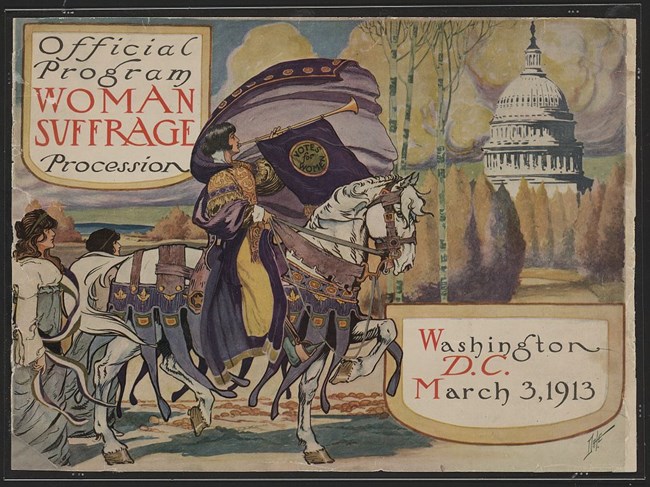
National Woman's Party collection, Library of Congress
Why a Pageant?
According to the Woman Suffrage Procession Official Program:
“The story told in the Procession shows what woman is striving to achieve, as well as what she has so far attained. The Allegory, on the other hand, illustrates those ideals toward which both men and woman have been struggling through the ages and toward which, in co-operation and equality, they will continue to strive.”
The pageant performers ended up shivering on the steps for much longer than anticipated, because "a horrible, howling mob" of spectators streamed onto Pennsylvania Avenue, blocking the procession and bringing everything to a halt. Eventually, the U.S. Cavalry arrived and escorted the marchers to their destination so that the pageant could begin.
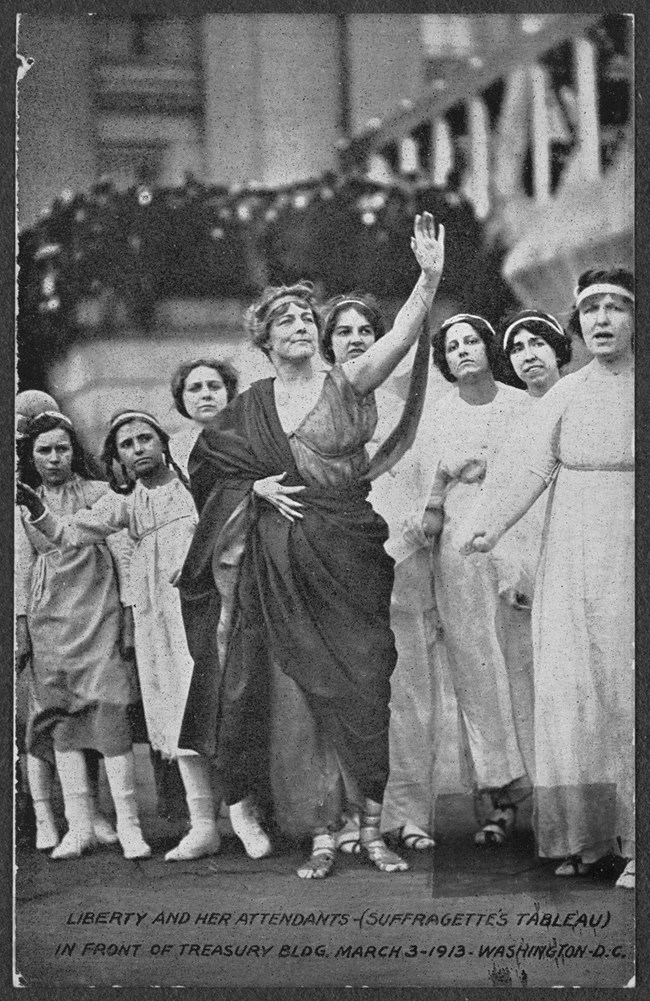
National Woman's Party collection, Library of Congress
As the trumpets sounded the approach of the Procession, German actress Hedwig Reicher, dressed in red, white, and blue, appeared on the steps of the Treasury Building as the allegorical figure Columbia. She was followed by women dressed in purple robes representing Justice, Charity, Liberty, Peace, and Hope. Famous dancer Florence Noyes performed as Liberty. Each allegorical figure was attended by women and girls dressed in white, representing a "new crusade" of women demanding equality. The performers created several tableaus--groups of motionless figures representing scenes from stories or history.
The Allegory was a great hit. Pageants were a popular type of entertainment in the early 20th century. The art form provided an opportunity for regular members of the communtiy to perform along with theater and dance professionals. They were an excellent way to bring publicity to the cause of women's equality. Hazel MacKaye continued to write and direct suffrage pageants in the following years as a way to raise awareness and support for the Nineteenth Amendment.
Hazel MacKaye came from a performing arts family. Her father Harold Steel MacKaye was a famous playwright. He named his daughter after the title character in one of his plays, Hazel Kirke. Hazel's mother was an actor and her brother Percy was one of the founders of the American pageantry movement. The whole MacKaye family was also very active in Progressive Era reforms, including woman suffrage.
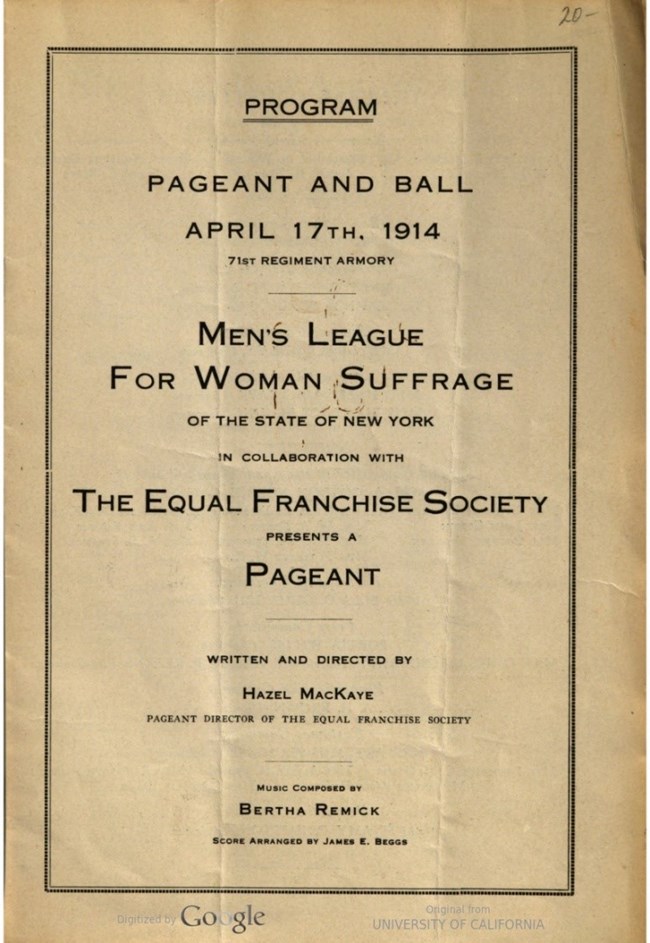
The American Woman: Six Periods of American Life
In 1914, the New York City Men’s League for Women’s Suffrage commissioned Hazel MacKaye’s next suffrage pageant. It was called The American Woman: Six Periods of American Life. The pageant was a parody. It dramatized scenes which compared men’s freedoms to the social, political, and economic limitations that women face. It was organized in sections that looked at different historical eras: Native American societies before European contact; the Salem Witch Trials; American colonies just before the Revolution; the Civil War; the Reconstruction era and voting rights for Black men; and “The Present (when discrimination still persisted.)” The story included a scene of police arresting Susan B. Anthony for casting a vote in the 1872 election.
The American Woman was not as popular as The Allegory had been. Perhaps the storyline was a bit too hard-hitting for the audience. Watching dramatizations of the injustices faced by women in the past and recognizing how those oppressions continued into the present was not the light-hearted entertainment that communities expected of pageants. Hazel MacKaye returned to the allegorical approach for future pageants.
"Susan B. Anthony: A Dream of Freedom"
The next year, Hazel MacKaye found more success creating a pageant that used history and fantasy to dramatize the story of a hero of the suffrage movement, Susan B. Anthony. In A Dream of Freedom, MacKaye presented biographical sketches to highlight moments in Anthony's life interwoven with allegorical interludes. The pageant included Anthony's Quaker abolitionist upbringing, meeting Elizabeth Cady Stanton and joining the women's rights movement, her trial for voting illegally because she was a woman, and lobbying for a constitutional amendment enfranchising women. The pageant concluded with Susan B. Anthony's 80th birthday in 1900, by which time women had won the vote in four states. A Dream of Freedom became a regular suffragist pageant and played at several venues. MacKaye’s reputation rebounded. She became the nation's premiere pageant director.
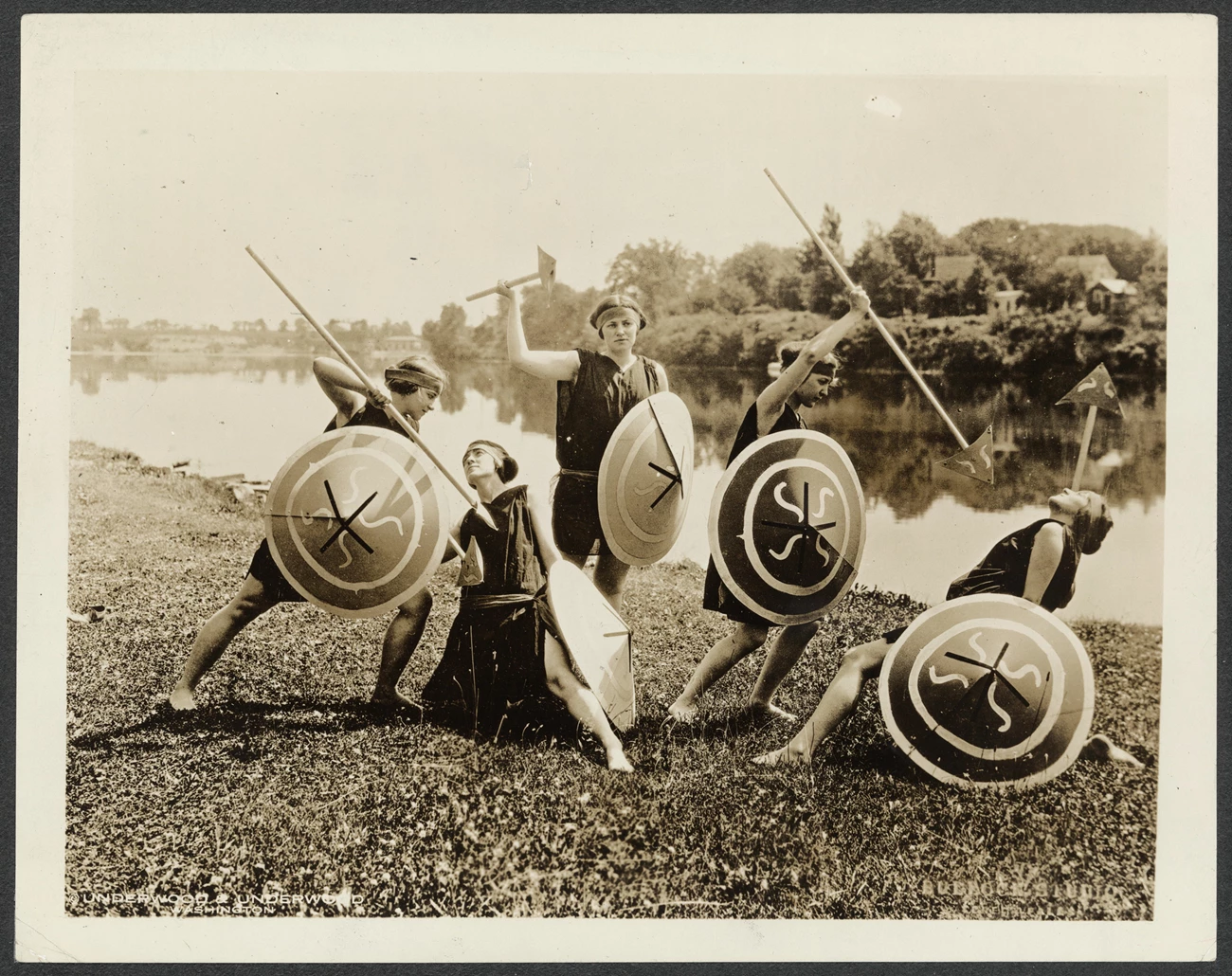
National Woman's Party collection, Library of Congress
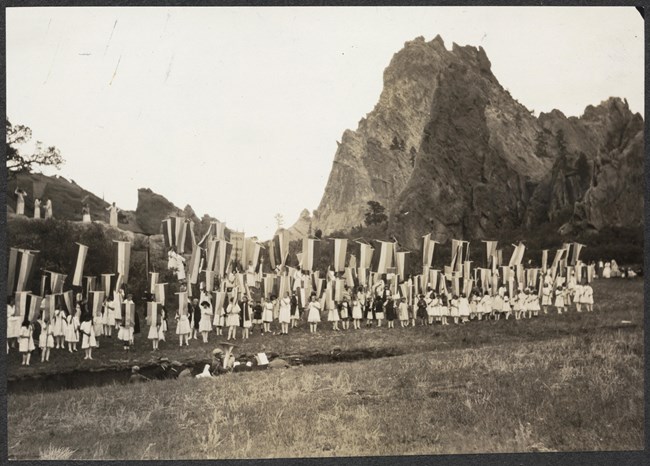
National Woman's Party Collection, Library of Congress
From Suffrage to Equality
Hazel MacKaye continued to direct pageants after women won the vote with the ratification of the 19th Amendment in 1920. In 1923 MacKaye, pulled out all the stops for the 75th Anniversary of the 1848 Woman’s Rights Convention in Seneca Falls, New York. The festivities included a grand parade, trumpets, 500 banner bearers, and 1000 women portraying historic figures in the women’s rights movement. At dark, illuminated barges floated on the lake. A finale awed all who were present: an electric sign flashed “Declaration of Principles,” a new document created by the National Woman's Party with a list of all that was yet to be won in the fight for women's full equality.
The celebration was such a success that two months later, Colorado Springs suffragists recreated the pageant in the Garden of the Gods. In this magestic natural landscape, the pageant was expanded with a scene of women pioneers on the Overland Trail.
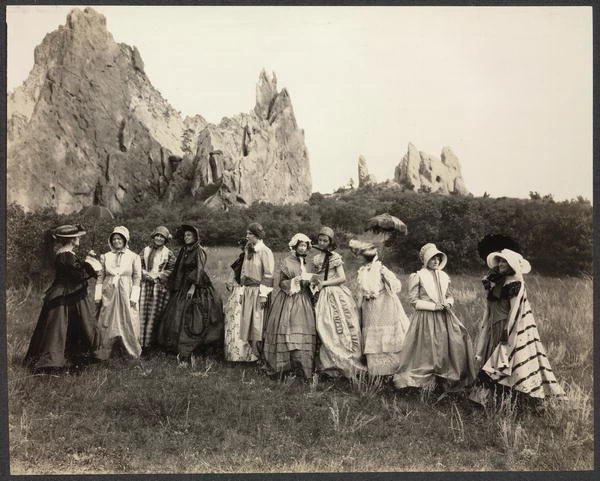
National Woman's Party collection, Library of Congress
Forward Into Light
Hazel MacKaye’s final Pageant, Forward into Light, took place in 1924 at the National Women’s Party (NWP) annual conference in Westport-on-Lake Champlain, NY. It was an extravaganza built on all her earlier successes. The title, Forward Into Light, honored suffragist Inez Milholland who who carried a banner with that slogan while leading the 1911 New York City suffrage parade. Inez rode a white horse at the head of the 1913 Woman’s Suffrage Procession as the herald of the future. Often called "the most beautiful suffragist," Inez died in 1916 after collapsing while giving a speech in Los Angeles on a cross-country suffrage campaign. The Forward into Light pageant revisited the themes of the 75th Anniversary Pageant with added scenes depicting accomplishments of women in ancient Egypt, the Holy Land, Greece and Rome. It included the picketing campaign of 1917 and a celebration of the life of Inez Milholland.
After the triumph of her final pageant, Hazel MacKaye became a teacher. Her legacy included the promotion of Progressive ideals that invited community participation in history while out-of-doors for health and recreation. Through drama and pageantry, she created performances that engaged new audiences in the work for equality and justice.
